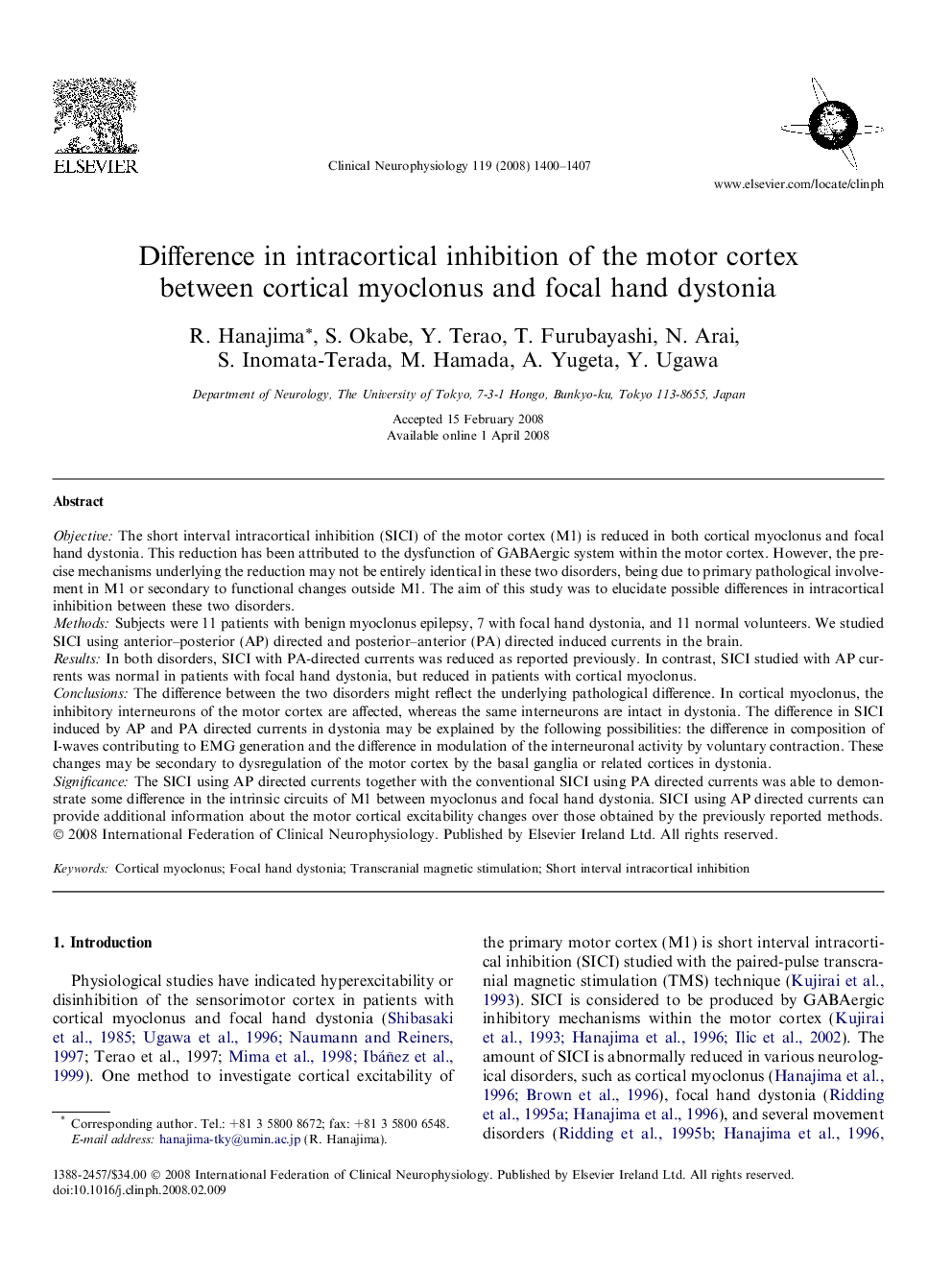| Article ID | Journal | Published Year | Pages | File Type |
|---|---|---|---|---|
| 3047461 | Clinical Neurophysiology | 2008 | 8 Pages |
ObjectiveThe short interval intracortical inhibition (SICI) of the motor cortex (M1) is reduced in both cortical myoclonus and focal hand dystonia. This reduction has been attributed to the dysfunction of GABAergic system within the motor cortex. However, the precise mechanisms underlying the reduction may not be entirely identical in these two disorders, being due to primary pathological involvement in M1 or secondary to functional changes outside M1. The aim of this study was to elucidate possible differences in intracortical inhibition between these two disorders.MethodsSubjects were 11 patients with benign myoclonus epilepsy, 7 with focal hand dystonia, and 11 normal volunteers. We studied SICI using anterior–posterior (AP) directed and posterior–anterior (PA) directed induced currents in the brain.ResultsIn both disorders, SICI with PA-directed currents was reduced as reported previously. In contrast, SICI studied with AP currents was normal in patients with focal hand dystonia, but reduced in patients with cortical myoclonus.ConclusionsThe difference between the two disorders might reflect the underlying pathological difference. In cortical myoclonus, the inhibitory interneurons of the motor cortex are affected, whereas the same interneurons are intact in dystonia. The difference in SICI induced by AP and PA directed currents in dystonia may be explained by the following possibilities: the difference in composition of I-waves contributing to EMG generation and the difference in modulation of the interneuronal activity by voluntary contraction. These changes may be secondary to dysregulation of the motor cortex by the basal ganglia or related cortices in dystonia.SignificanceThe SICI using AP directed currents together with the conventional SICI using PA directed currents was able to demonstrate some difference in the intrinsic circuits of M1 between myoclonus and focal hand dystonia. SICI using AP directed currents can provide additional information about the motor cortical excitability changes over those obtained by the previously reported methods.
